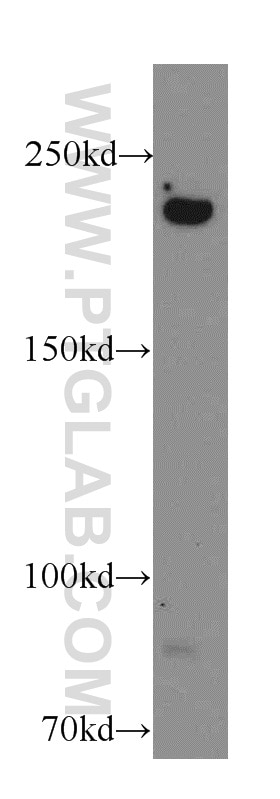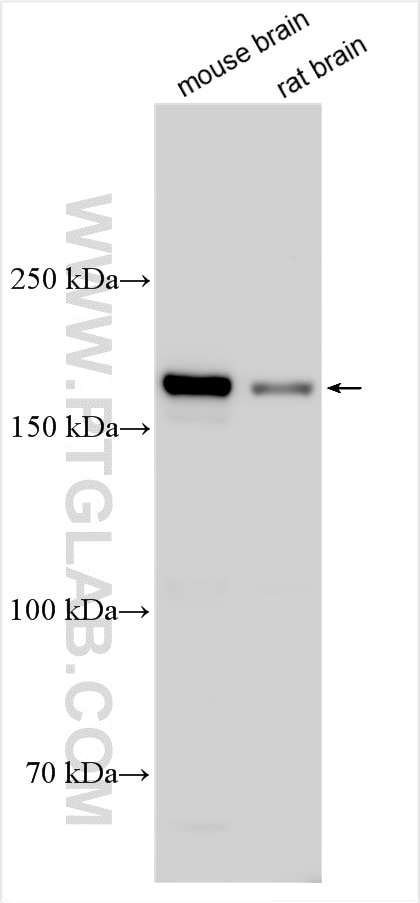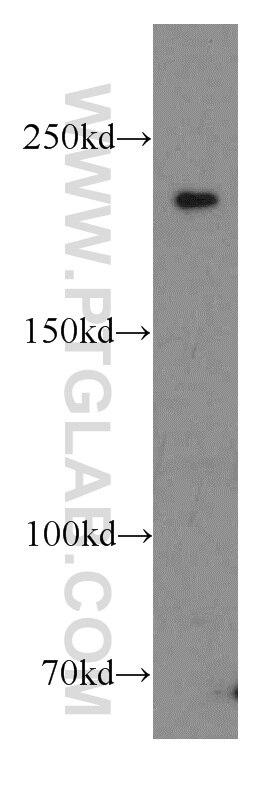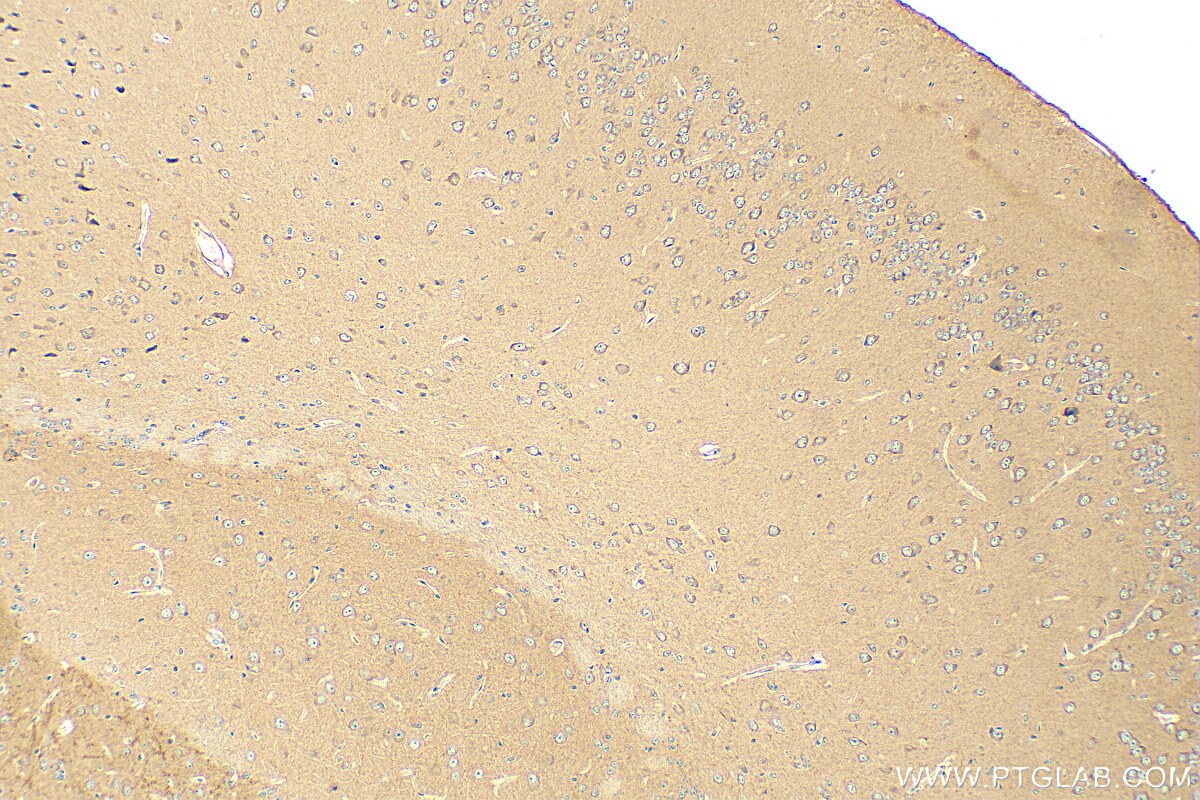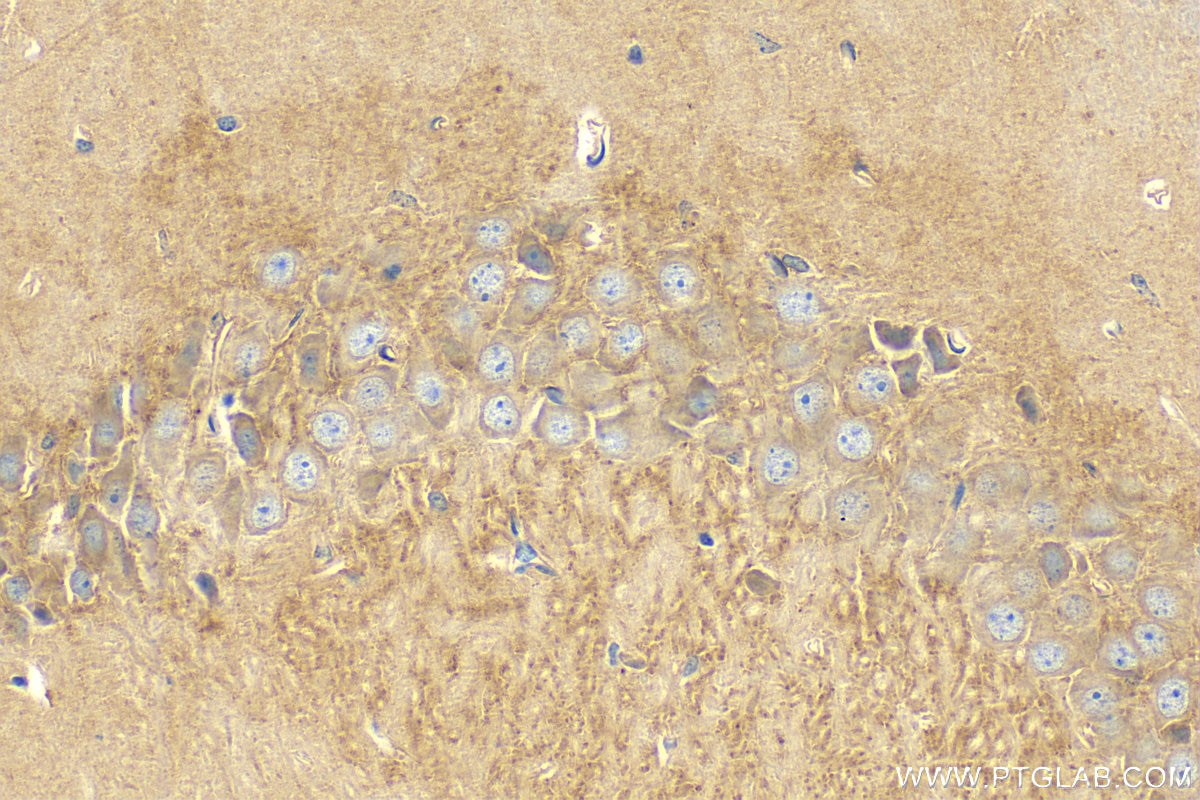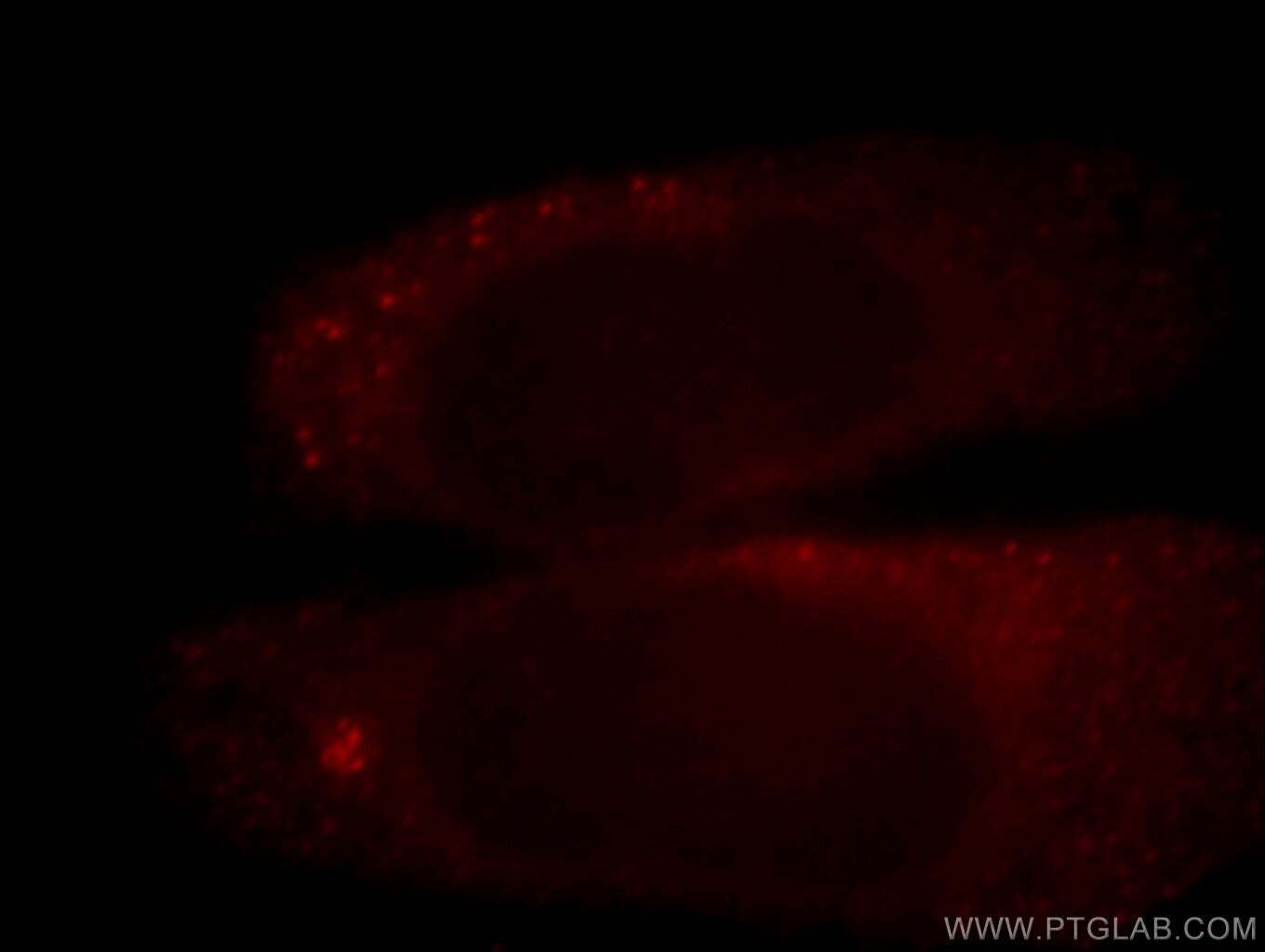Anticorps Polyclonal de lapin anti-CIT
CIT Polyclonal Antibody for WB, IF, IHC, ELISA
Hôte / Isotype
Lapin / IgG
Réactivité testée
Humain, rat, souris
Applications
WB, IHC, IF/ICC, ELISA
Conjugaison
Non conjugué
N° de cat : 20033-1-AP
Synonymes
Galerie de données de validation
Applications testées
| Résultats positifs en WB | cellules A431, cellules HeLa, tissu cérébral de rat, tissu cérébral de souris |
| Résultats positifs en IHC | tissu cérébral de souris, il est suggéré de démasquer l'antigène avec un tampon de TE buffer pH 9.0; (*) À défaut, 'le démasquage de l'antigène peut être 'effectué avec un tampon citrate pH 6,0. |
| Résultats positifs en IF/ICC | cellules HepG2 |
Dilution recommandée
| Application | Dilution |
|---|---|
| Western Blot (WB) | WB : 1:500-1:2000 |
| Immunohistochimie (IHC) | IHC : 1:50-1:500 |
| Immunofluorescence (IF)/ICC | IF/ICC : 1:10-1:100 |
| It is recommended that this reagent should be titrated in each testing system to obtain optimal results. | |
| Sample-dependent, check data in validation data gallery | |
Applications publiées
| WB | See 3 publications below |
Informations sur le produit
20033-1-AP cible CIT dans les applications de WB, IHC, IF/ICC, ELISA et montre une réactivité avec des échantillons Humain, rat, souris
| Réactivité | Humain, rat, souris |
| Réactivité citée | Humain, souris |
| Hôte / Isotype | Lapin / IgG |
| Clonalité | Polyclonal |
| Type | Anticorps |
| Immunogène | Peptide |
| Nom complet | citron (rho-interacting, serine/threonine kinase 21) |
| Masse moléculaire calculée | 231 kDa |
| Poids moléculaire observé | 230 kDa, 177 kDa |
| Numéro d’acquisition GenBank | NM_007174 |
| Symbole du gène | CIT |
| Identification du gène (NCBI) | 11113 |
| Conjugaison | Non conjugué |
| Forme | Liquide |
| Méthode de purification | Purification par affinité contre l'antigène |
| Tampon de stockage | PBS avec azoture de sodium à 0,02 % et glycérol à 50 % pH 7,3 |
| Conditions de stockage | Stocker à -20°C. Stable pendant un an après l'expédition. L'aliquotage n'est pas nécessaire pour le stockage à -20oC Les 20ul contiennent 0,1% de BSA. |
Informations générales
CIT, also named KIAA0949, STK21 and CRIK, belongs to the protein kinase superfamily and AGC Ser/Thr protein kinase family. It is required for KIF14 localization to the central spindle and midbody. CIT may play a role in cytokinesis. Putative RHO/RAC effector that binds to the GTP-bound forms of RHO and RAC1. It probably binds p21 with a tighter specificity in vivo. CIT plays an important role in the regulation of cytokinesis and the development of the central nervous system. The antibody recognizes all the isoforms of CIT.
Protocole
| Product Specific Protocols | |
|---|---|
| WB protocol for CIT antibody 20033-1-AP | Download protocol |
| IHC protocol for CIT antibody 20033-1-AP | Download protocol |
| IF protocol for CIT antibody 20033-1-AP | Download protocol |
| Standard Protocols | |
|---|---|
| Click here to view our Standard Protocols |
Publications
| Species | Application | Title |
|---|---|---|
Mol Cell Biol E2F-2 Promotes Nuclear Condensation and Enucleation of Terminally Differentiated Erythroblasts. | ||
Sci Rep A three-gene signature reveals changes in the tumor immune microenvironment in the progression from NAFLD to HCC |
